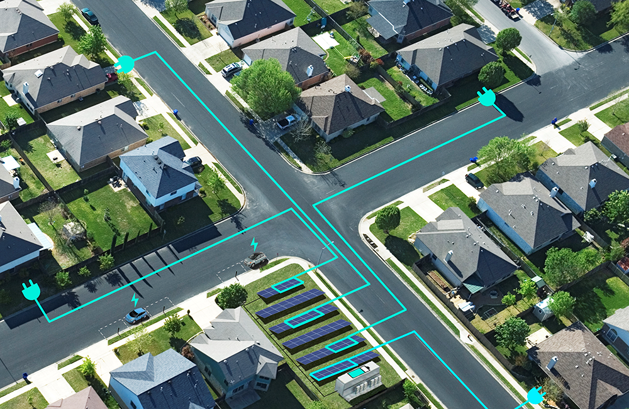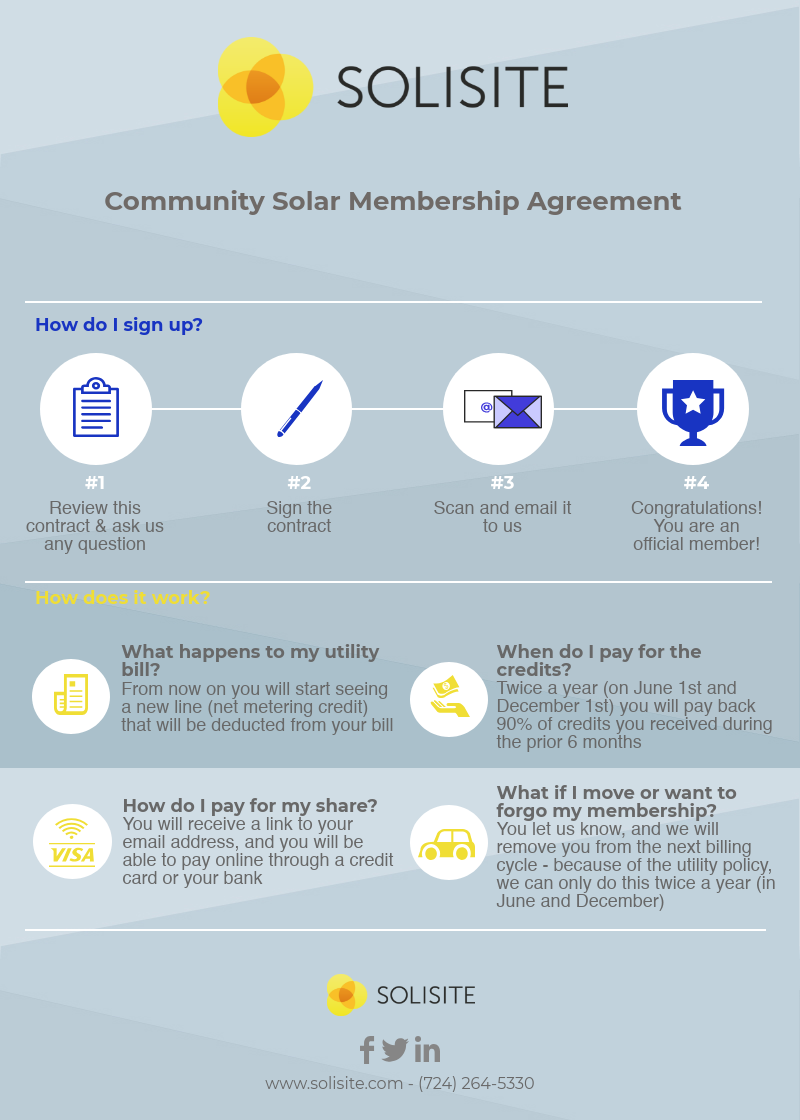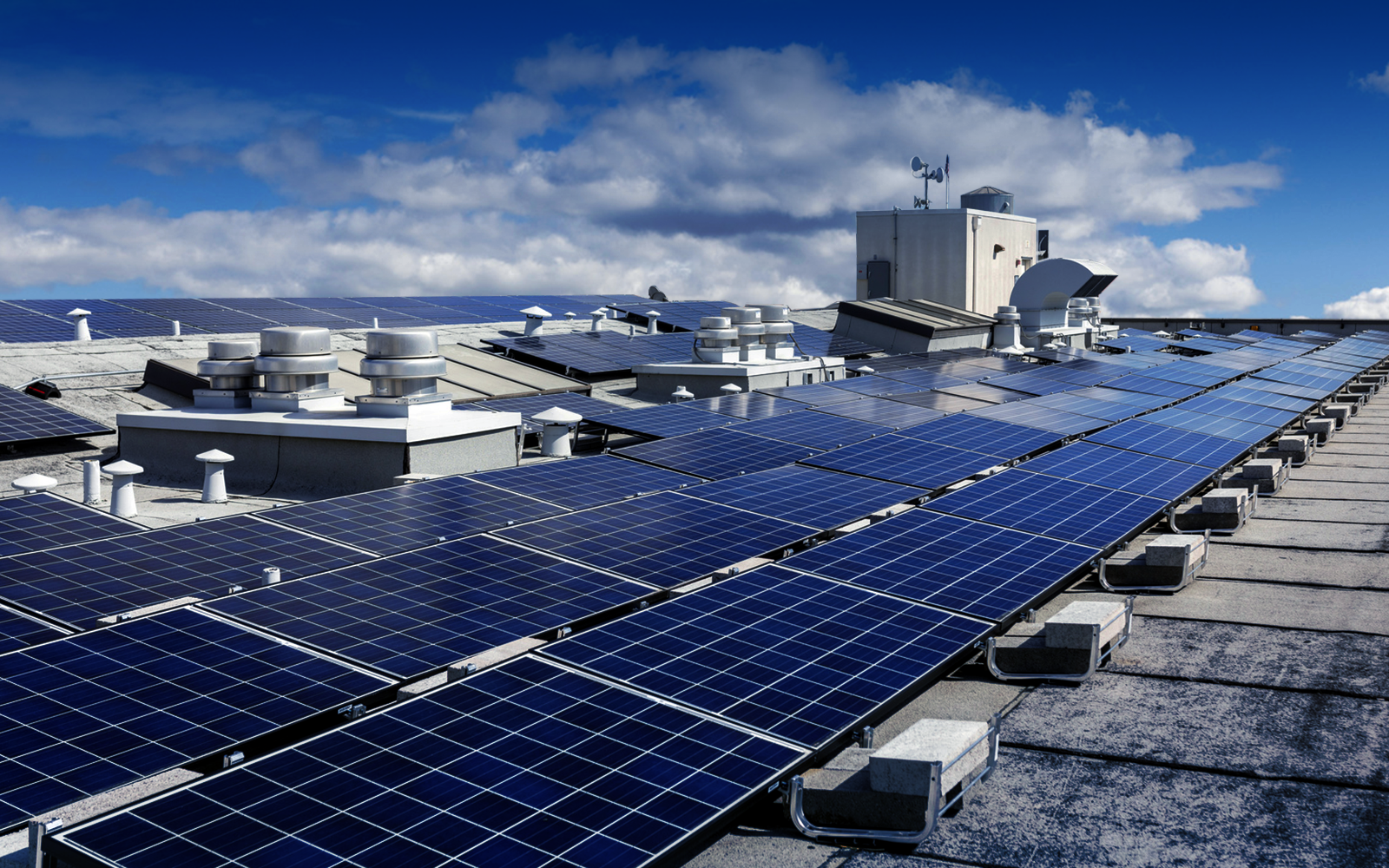What is community solar?
What is community solar?
Introduction
Welcome to our first knowledge module! It is focused on understanding community solar energy. If you’re considering installing solar panels, you’re probably excited about the prospect of saving money on your energy bills and doing your part for the environment. But with so many solar companies and offers out there, it can be overwhelming to know where to start. That’s where this module comes in. We’ll help you understand the key factors to consider when evaluating solar energy offers, as well as provide some practical tips and case studies to guide you through the process. We will cover the key considerations for evaluating offers from solar installers, as well as the various financing options and incentives available for solar energy systems. By the end of this module, you will have a better understanding of how to choose the best solar energy offer for your situation and maximize your investment in solar energy.

What to consider when evaluating offers
Factors to consider when evaluating solar energy offers: amount of solar energy needed, pricing model (subscription-based or ownership-based), the estimated savings, the length of the agreement, and the terms and conditions of the offer.
There are a few key factors to consider when evaluating solar energy offers from installers. The first and most important is the size and type of solar panel system that’s being offered. You’ll want to make sure that the system is appropriately sized for your energy needs and that it uses high-quality, efficient panels. You’ll also want to consider the pricing model of the offer – whether it’s subscription-based or ownership-based. Subscription-based models involve paying a monthly fee for the electricity generated by the solar panels, while ownership-based models involve purchasing the panels outright or taking out a loan to finance them.
When evaluating solar energy offers from installers, there are several key factors to consider:
- Size and type of solar panel system: The size and type of solar panel system will determine how much electricity it can generate and how efficient it is. Look for a system that meets your energy needs and has high-quality panels with a good warranty.
- Company reputation and experience: Choose a reputable and experienced solar installer with a proven track record of successfully installing and maintaining solar energy systems.
- Pricing model: There are two main pricing models for solar energy systems: subscription-based and ownership-based. Subscription-based programs allow you to pay a monthly fee for the electricity generated by the solar panels, while ownership-based programs require an upfront purchase or loan. Consider which pricing model works best for your budget and energy needs.
- Estimated savings: Look for an offer that provides clear estimates of the energy savings you can expect from the solar energy system. Be aware that the actual savings may vary based on factors such as weather and energy usage.
- Length of the agreement: Most solar energy offers come with a long-term agreement, so be sure to understand the terms and conditions of the offer and how long you’ll be committed to the program.
- Terms and conditions: Carefully review the terms and conditions of the offer, including any penalties for early termination or changes to the agreement.

Understanding financing options
Pros and cons of the financing options available, including outright purchase, loans, and leases.
There are several financing options available for solar energy systems, including outright purchase, loans, and leases. Outright purchase involves paying for the solar panel system upfront, either with cash or a loan. This option allows you to take advantage of all available incentives and credits, but it also requires a significant upfront investment. A loan allows you to finance the purchase of a solar panel system and pay it off over time, with the option to take advantage of incentives and credits. A lease involves paying a monthly fee to use the solar panel system, with the option to purchase it at the end of the lease term. Leasing can be a good option if you don’t have the upfront capital to purchase a solar panel system, but it may not offer the same long-term savings as outright purchase or a loan.
Calculating the cost-benefit ratio
How to calculate the cost-benefit ratio of a solar energy system by taking into account the upfront cost, ongoing maintenance expenses, and potential energy savings.
To determine the true cost-benefit ratio of a solar energy system, you’ll need to consider the upfront cost, ongoing maintenance expenses, and potential energy savings. To calculate the cost-benefit ratio, divide the total cost of the system (including upfront and maintenance costs) by the total energy savings over the lifetime of the system. This will give you an idea of how long it will take for the system to pay for itself.
Evaluating incentives and credits
Various incentives and credits may be available to users, such as tax credits, rebates, and grants.
There are several incentives and credits that may be available to you if you decide to purchase, lease or subscribe to a community solar energy system. These include tax credits, rebates, and grants. It is important to understand how to take advantage of these incentives and credits in order to reduce the overall cost of your solar energy system. To take advantage of these incentives, you’ll need to do your research and understand the eligibility requirements. Some incentives are only available for certain types of systems or certain states, others may require specific tax eligibility requirements.
Real-world Case Studies
Real-world examples of how users have successfully evaluated and chosen solar energy offers, including any challenges they faced and how they overcame them.
Case Study 1:
Meet Mary and Tom, a married couple in their late 40s who own a small business in a suburb of New York City. They have always been environmentally conscious and were interested in solar energy, but their roof was not suitable for solar panels and they didn’t have the upfront funds to purchase a system outright. They heard about community solar through a friend and decided to look into it further. After some research, they decided to sign up for a subscription-based community solar program through a special purpose entity. They chose a program with a fixed, flat rate for solar and no upfront fees, which gave them the most certainty about their future energy costs. They also liked that the program was run by a local business and supported by their community.
Since signing up for the program, Mary and Tom have been able to save about 10% on their annual energy costs. They also appreciate knowing that they are contributing to the use of clean energy in their community. Overall, they are very satisfied with their decision to switch to community solar and have recommended it to other friends and businesses in their area.
Case Study 2:
Mary and her family lived in an apartment complex that was not suitable for installing solar panels on the roof. However, they still wanted to find a way to reduce their energy costs and have a positive impact on the environment. After doing some research, they learned about a non-profit community solar program in their area. The program was hosted by a local school and funded through tax-deductible donations from supporters. Mary and her family decided to donate to the program and received a share of the solar energy produced as a thank-you gift. They were pleased to be able to support a good cause while also receiving a small discount on their energy bills. They were happy with their decision to participate in the non-profit community solar program and felt good about supporting a sustainable energy source.
Case Study 3:
Sarah and her husband recently purchased a new home in a community that offered a subscription-based community solar program. They were excited to learn that they could reduce their monthly energy bills by subscribing to a share of the solar panels in the community. After evaluating the offer, they decided that a 5 kW share would meet their energy needs and allow them to save about 10% on their monthly energy bills. They appreciated that the program offered a fixed, flat rate for the solar energy and that there were no upfront fees to join. Sarah and her husband were also able to take advantage of state and federal tax credits, which helped offset the cost of their subscription. Overall, they were happy with their decision to join the community solar program and look forward to seeing their energy savings grow over time.

Conclusion
In conclusion, community solar is a great option for those looking to access solar energy without installing panels on their own property. By participating in a community solar project, users can share the benefits of a single solar panel system with other households or businesses, reducing up-front costs and increasing access to solar energy. There are three main types of community solar projects: utility-sponsored, special purpose entity, and non-profit. Each of these models has its own legal and financial considerations, as well as state policies that encourage community solar. It is important for users to understand the pricing model (subscription-based or ownership-based), the estimated savings, the length of the agreement, and the terms and conditions of the offer when evaluating community solar options. There are various financing options available for community solar projects, including outright purchase, loans, and leases, and users should choose the one that best fits their needs. It is also important to calculate the cost-benefit ratio of a community solar project, taking into account upfront cost, ongoing maintenance expenses, and potential energy savings. Finally, users should be aware of the various incentives and credits that may be available to them, such as tax credits, rebates, and grants, which can help reduce the cost of a community solar project. By considering all of these factors, users can make an informed decision about whether community solar is right for them. We encourage users to continue learning about solar energy and all of the options available to them in order to make the most informed decision possible.
